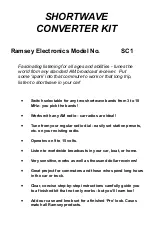
Heat Pump
Unitherm 3 R32
8
1. Diagram of the Operating Principle
Compressor
4-wayv alve
Gas-liquid
separator
EXV1
Fin-tube
heat exchanger
Fan
Highp ressure
switch
Discharge
temp. sensor
Suctiont emp.
sensor
AmbientT emp. Sensor
T-water in
PE
Safety
vavle
Expansion
vessel
T-liquid pipe
T-gas pipe
Highp ressure
sensor
Low pressure
switch(cooling)
D
E
C
S
Outdoor Unit
Indoor Unit
B
A
Economi
zer
EXV2
Defrost temp.
sensor
T-economizer out
T-economizer in
Optional
E-heater
3-way
valve
Flow
switch
Water
pump
T-watero ut
PE
T-optional
water sensor
Low pressure
switch(heating)
Heating
DHW
WaterT ank
Mixing
Valve
WaterP ump
Floor
Temp.
Tank Temp.s ensor
3-Way
Valve
2-Way
Valve
Water Tank EH
Othert hermal
Field Supply
Notes
(a) Water mixing accessories are optional parts. When they are required, please contact the manufacturer.
(b) The 3-way valve to be installed on site should be controlled by the user.
2. Operating Principle of the Unit
DC Inverter Air to Water Heat Pump is composed of outdoor unit, indoor unit and internal-fan coil water tank.
Operation functions:
(1)
Cooling;
(2)
Heating;
(3)
Water heating;
(4)
C water heating;
(5)
H water heating;
(6)
Emergency mode;
(7)
Quick water heating;
(8)
Holiday mode;
(9)
Forced Operation Mode;
(10)
Quiet mode;
(11)
Disinfection mode;
(12)
Weather-dependent Operation;
(13)
Floor debugging;
(14)
Air removal of the water system;
(15) Other thermal.
Cooling:
in cooling mode, the refrigerant is condensed in the outdoor unit and evaporated in the indoor unit. Via
the heat exchange with water in the indoor unit, the temperature of water decreases and it releases heat while the
refrigerant absorbs heat and evaporates. With the help of wired controller, the outflow temperature can meet the
user’s requirement. Through the control of valve, the low-temperature water in the system is connected with indoor
fan coil and underground pipe, and exchanges heat with the indoor air so that the indoor temperature decreases to
the required range.
Heating:
in heating mode, the refrigerant evaporates in the outdoor unit and is condensed in the indoor unit.
Via the heat exchange with water in the indoor unit, the water absorbs heat and its temperature increases while the
refrigerant releases heat and is condensed. With the help of wired controller, the outflow temperature can meet the
user’s requirement. Through the control of valve, the high-temperature water in the system is connected with indoor
fan coil and underground pipe, and exchanges heat with the indoor air so that the indoor temperature increases to
the required range.













































